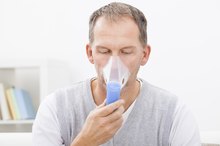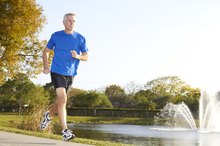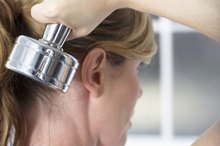What does fact checked mean?
At Healthfully, we strive to deliver objective content that is accurate and up-to-date. Our team periodically reviews articles in order to ensure content quality. The sources cited below consist of evidence from peer-reviewed journals, prominent medical organizations, academic associations, and government data.
- National Institute of Neurological Disorders and Stroke: Myasthenia Gravis Fact Sheet
- "Archives of Physical Medicine and Rehabilitation"; Exercise Therapy and Other Types of Physical Therapy for Patients with Neuromuscular Diseases: A Systematic Review; E.H. Cup, et al.; November 2007
- "Archives of Physical Medicine and Rehabilitation"; Exercise Therapy and Other Types of Physical Therapy for Patients with Neuromuscular Diseases: A Systematic Review; E.H. Cup, et al.; November 2007
The information contained on this site is for informational purposes only, and should not be used as a substitute for the advice of a professional health care provider. Please check with the appropriate physician regarding health questions and concerns. Although we strive to deliver accurate and up-to-date information, no guarantee to that effect is made.
Physical Therapy for Myasthenia Gravis
Myasthenia gravis produces various degrees of weakness in the muscles in your face, arms and legs as well as the muscles that control your breathing 2. Research published in the September 2005 issue of the journal “Chest” indicates that physical therapy breathing techniques can improve respiratory muscle strength in patients with this neuromuscular disease 3. If you suffer from myasthenia gravis, your doctor may recommend physical therapy exercises to help strengthen your muscles 2.
If you are experiencing serious medical symptoms, seek emergency treatment immediately.
Myasthenia Gravis
Myasthenia gravis -- an autoimmune disease -- results from your body’s immune system producing antibodies that attack its own tissues 2. In this case, the body produces antibodies that block or destroy muscle receptors necessary for nerve-to-muscle communication and subsequent muscle contraction. Myasthenia gravis generally produces muscle weakness that increases during physical activities and subsides after resting 2. This disease often affects the various muscles involved in eye and eyelid movement, facial expressions, chewing, talking and swallowing. Medical treatments -- in conjunction with physical therapy -- can help you lead a normal to almost normal life, according to the National Institute of Neurological Disorders and Stroke 1.
Physical Therapy Exercises
Facial Exercises for Stroke Patients
Learn More
Your physical therapist will design a program of exercises that focus on strengthening the specific muscles weakened by myasthenia gravis 2. For instance, she might suggest performing squats to strengthen the quadriceps and hamstring muscles in your thighs and leg raises to promote strength in your abdominal and hip muscles. If your muscles are extremely weak, your therapist may instruct you to perform exercises with some assistance. After noting significant improvement, she might direct you to perform range-of-motion exercises that move your muscles through a full range of motion -- without assistance. A physical therapist can gradually add strengthening exercises, such as weightlifting, to your activity regimen. Moreover, she will modify and recommend activities depending on your day-to-day functioning. The progression of specific exercises, along with the intensity and duration of each exercise, will also vary depending on your overall condition.
- Your physical therapist will design a program of exercises that focus on strengthening the specific muscles weakened by myasthenia gravis 2.
- A physical therapist can gradually add strengthening exercises, such as weightlifting, to your activity regimen.
Breathing Exercises
Physical therapy for myasthenia gravis can also consist of breathing exercises to help improve your lung function 2. Breathing exercises may include inspiratory muscle training, which strengthens your lung muscles through the use of a breathing device, pursed-lip breathing and diaphragmatic breathing. Pursed-lip breathing helps release trapped air in your lungs and eases shortness of breath. You can perform pursed-lip breathing by inhaling slowly through your nose for a count of two, taking a normal breath, and then exhaling for a count of four through puckered lips. Diaphragmatic breathing, or abdominal breathing, involves exhaling through your mouth and then taking a deep breath through your nose -- filling your abdomen -- and holding it as long as possible. Your physical therapist will specify the frequency and duration of each breathing exercise based on your individual needs.
- Physical therapy for myasthenia gravis can also consist of breathing exercises to help improve your lung function 2.
- Diaphragmatic breathing, or abdominal breathing, involves exhaling through your mouth and then taking a deep breath through your nose -- filling your abdomen -- and holding it as long as possible.
Breathing Technique Effectiveness
Breathing Exercises for Stuttering
Learn More
A 2005 Spanish study observed the effects of interval-based inspiratory muscle training combined with breathing retaining techniques on 27 patients diagnosed with generalized myasthenia gravis 2. Researchers placed patients into either a group that participated in interval-based inspiratory muscle training -- with built-in recovery intervals, along with diaphragmatic breathing and pursed-lip breathing, or into a control group. Over an eight-week period, patients completed breathing exercises three times per week: once at the hospital and twice at home -- supervised by a physical therapist. During 45-minute sessions, subjects engaged in 10-minute blocks each of interval-based inspiratory muscle training and the breathing retaining techniques. Patients participating in the breathing exercises exhibited significant improvements in breathing muscle strength, rate and endurance, as well as chest-wall mobility when compared to those in the control group.
- A 2005 Spanish study observed the effects of interval-based inspiratory muscle training combined with breathing retaining techniques on 27 patients diagnosed with generalized myasthenia gravis 2.
- During 45-minute sessions, subjects engaged in 10-minute blocks each of interval-based inspiratory muscle training and the breathing retaining techniques.
Physical Therapy Effectiveness
Some scientific evidence suggests that physical therapy exercises may benefit patients suffering from myasthenia gravis 2. Research published in the November 2007 issue of the journal “Archives of Physical Medicine and Rehabilitation” evaluated 39 studies regarding the effectiveness of exercise therapy and physical therapy in patients with neuromuscular diseases, such as myasthenia gravis 23. Based on their observations, researchers determined that strengthening exercises combined with aerobic exercises, such as:
- walking
- jogging
- running
- were “likely to be effective” for patients with muscle disorders
In addition, evidence to support breathing exercises for patients suffering from myasthenia gravis, as well as patients with myotonic muscular dystrophy, was deemed to show “indications for effectiveness. 2”
Related Articles
References
- National Institute of Neurological Disorders and Stroke: Myasthenia Gravis Fact Sheet
- MDGuidelines; Myasthenia Gravis; 2010
- "Archives of Physical Medicine and Rehabilitation"; Exercise Therapy and Other Types of Physical Therapy for Patients with Neuromuscular Diseases: A Systematic Review; E.H. Cup, et al.; November 2007
- Sieb JP. Myasthenia gravis: an update for the clinician. Clin Exp Immunol. 2014;175(3):408-18. doi:10.1111/cei.12217
- Wendell LC, Levine JM. Myasthenic crisis. Neurohospitalist. 2011;1(1):16-22. doi:10.1177/1941875210382918
- Berrih-aknin S, Frenkian-cuvelier M, Eymard B. Diagnostic and clinical classification of autoimmune myasthenia gravis. J Autoimmun. 2014;48-49:143-8. doi:10.1016/j.jaut.2014.01.003
- Myasthenia Gravis Fact Sheet. National Institute of Neurological Disorders and Stroke. Aug 13, 2019.
- Colović MB, Krstić DZ, Lazarević-pašti TD, Bondžić AM, Vasić VM. Acetylcholinesterase inhibitors: pharmacology and toxicology. Curr Neuropharmacol. 2013;11(3):315-35. doi:10.2174/1570159X11311030006
- Szczeklik W, Wawrzycka K, Włudarczyk A, et al. Complications in patients treated with plasmapheresis in the intensive care unit. Anaesthesiol Intensive Ther. 2013;45(1):7-13. doi:10.5603/AIT.2013.0002
- Guo Y, Tian X, Wang X, Xiao Z. Adverse Effects of Immunoglobulin Therapy. Front Immunol. 2018;9:1299. doi:10.3389/fimmu.2018.01299
- Adams and Victor's Principles of Neurology, 9th ed: The McGraw-Hill Companies, Inc., 2009.
- Myasthenia Gravis Foundation of America. (2010). What Is Myasthenia Gravis?
- National Institute of Neurological Disorders and Stroke. (2017). Myasthenia Gravis Fact Sheet.
- Sieb JP. Myasthenia gravis: an update for the clinician. Clinical & Experimental Immunology. 2014 Mar;175(3): 408-18. doi:10.1111/cei.12217
- Trouth AJ, Dabi A, Solieman N, Kurukumbi M, Kalyanam J. Myasthenia Gravis: A Review. Autoimmune Dis. 2012;2012:874680. doi:10.1155/2012/874680
Resources
Writer Bio
Jan Millehan has published articles relating to health, fitness and disease on various websites. Her publishing history includes health-related articles on blogs and online directories, as well as an essay published in the Bridgewater College journal, "Philomathean." Millehan received a Bachelor of Science in elementary education from Bridgewater College.








